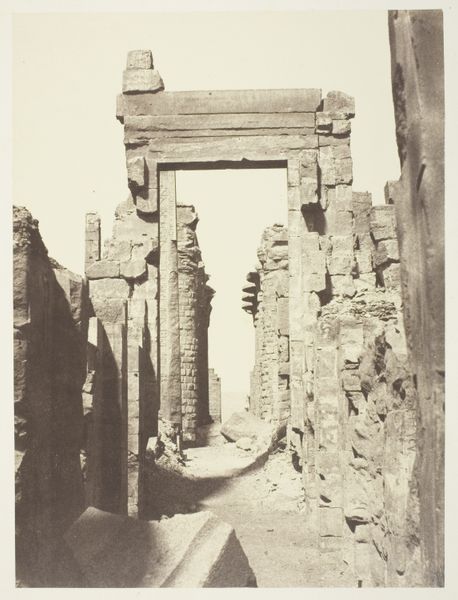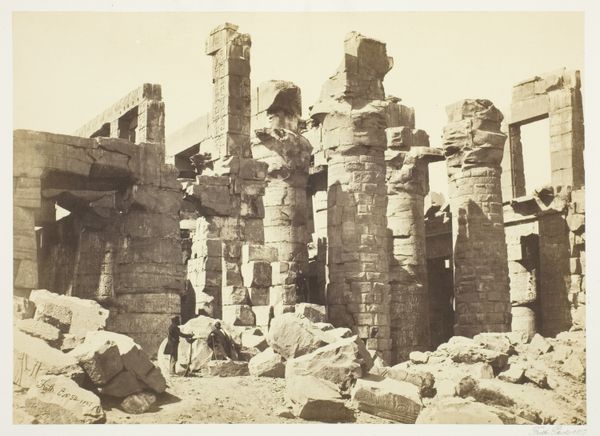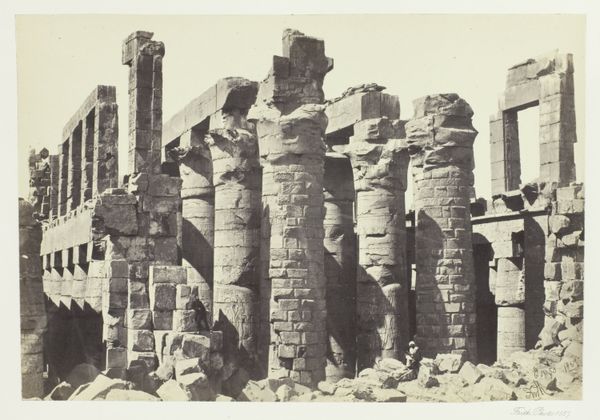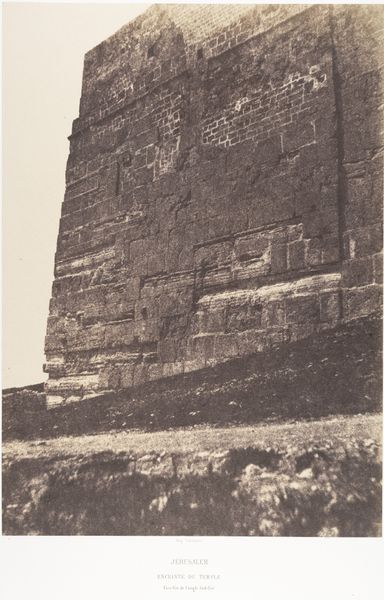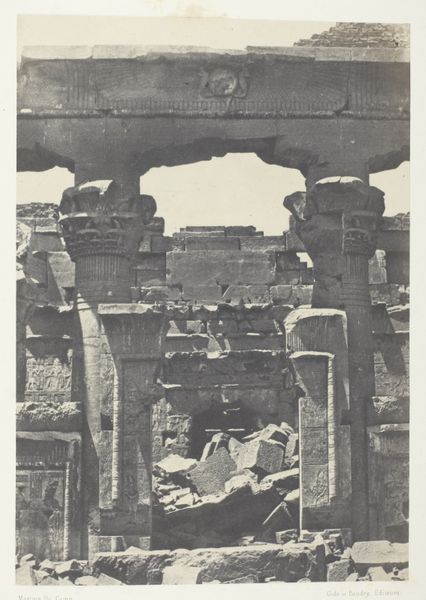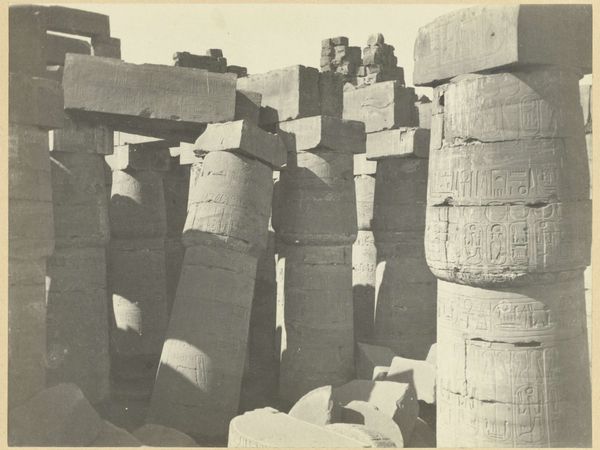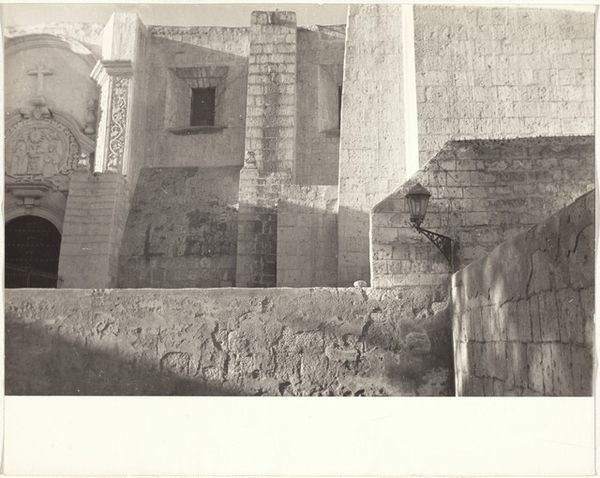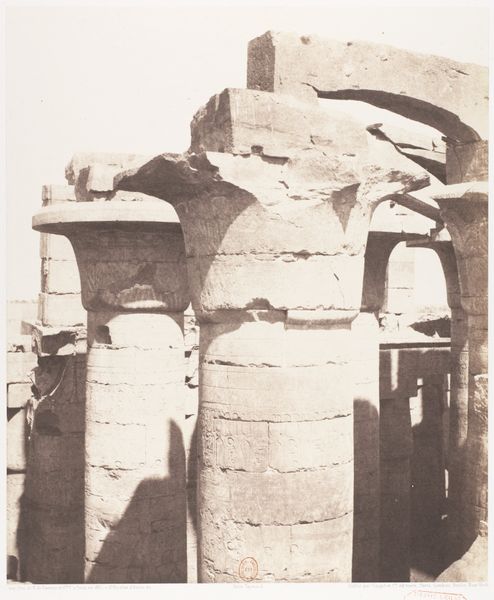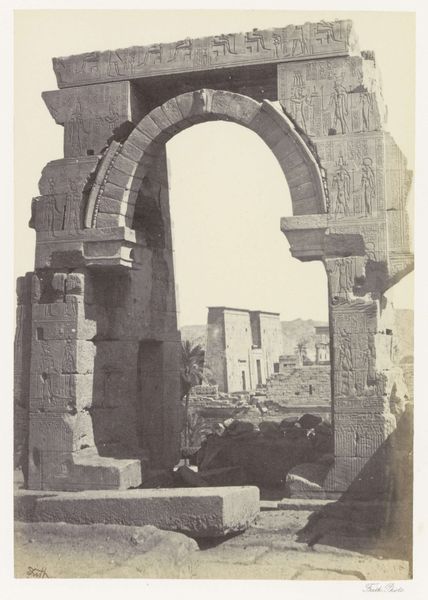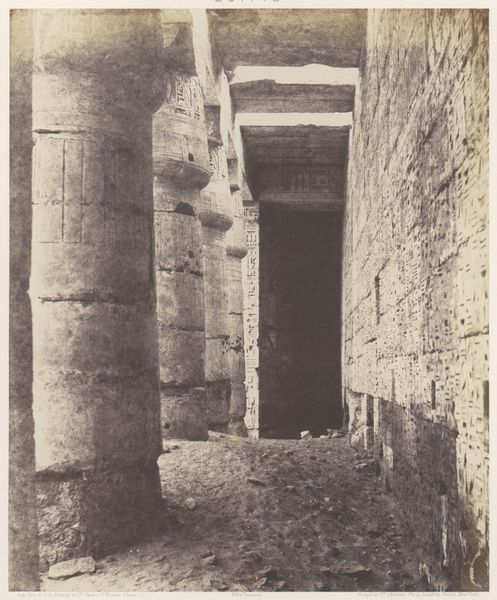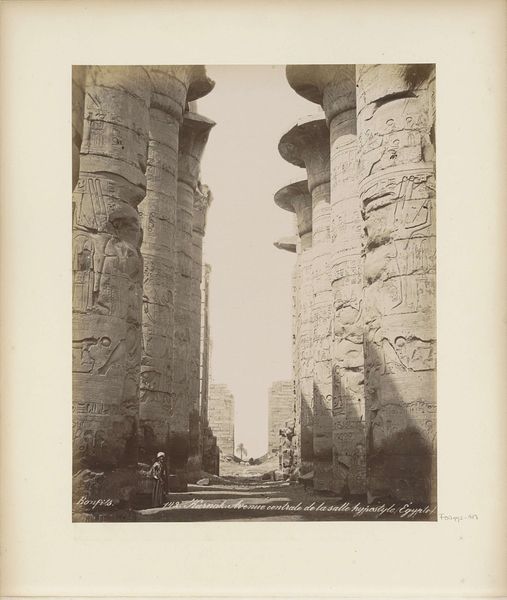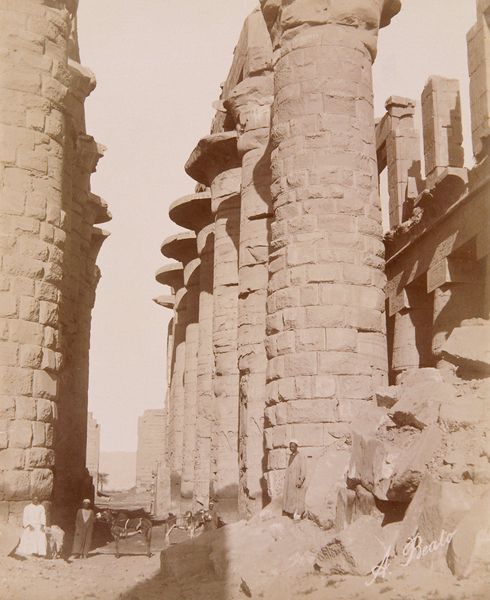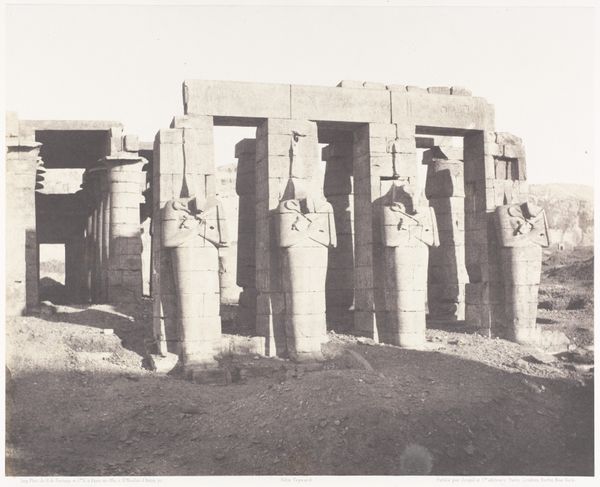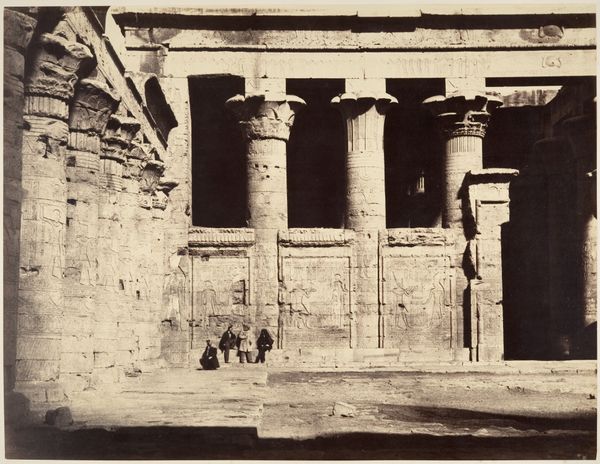
Karnak (Thèbes), Palais - Salle Hypostyle - Colonnade Centrale Vue du Point J 1851 - 1852
0:00
0:00
photography, architecture
#
landscape
#
ancient-egyptian-art
#
photography
#
ancient-mediterranean
#
architecture
Dimensions: 30.2 x 24.4 cm. (11 7/8 x 9 5/8 in.)
Copyright: Public Domain
Curator: This is Félix Teynard’s photograph, taken between 1851 and 1852, titled "Karnak (Thèbes), Palais - Salle Hypostyle - Colonnade Centrale Vue du Point J." It presents a view of the central colonnade within the Hypostyle Hall at Karnak. Editor: The immediate impression is one of sheer mass. These columns dwarf everything. The shadows create such strong vertical lines, reinforcing their immensity. There’s a powerful sense of gravity and time. Curator: Indeed. Teynard was part of an early wave of photographers documenting Egypt, which then, was increasingly becoming a site of intense colonial and archaeological interest for Europeans. His calotypes, like this one, were instrumental in shaping perceptions of ancient Egypt for Western audiences. Editor: The photograph itself, though, transcends mere documentation. Look at how Teynard frames the columns—not as individual structures, but as an overwhelming architectural language. The light emphasizes the textures, almost like a code etched into the very stone. It calls for structuralist approach, really—revealing inherent properties of language as applied to massive building features! Curator: Precisely, the very choice of representing Karnak through photography had a political dimension. Photography, as a modern technology, was juxtaposed against the ancient grandeur of Egypt. This act reinforced the colonial narrative of progress and positioned Europe as the inheritor and interpreter of ancient cultures. Editor: Although I cannot deny the colonial context you just mentioned, there is so much to the composition and execution alone! Consider the visual rhythm; the careful play between light and shadow transforms the columns into a powerful series. The tonal range creates incredible visual depth. Curator: The detail visible here is quite astonishing for calotype photography of that era, particularly considering the challenges Teynard faced with equipment and conditions in Egypt. These early photographs served to consolidate European knowledge, both academic and popular, regarding its colonial possessions. Editor: Still, irrespective of socio-political conditions under which this picture came to be, Teynard achieved a compelling abstract form out of a representational image, I appreciate the formal structure so clearly highlighted in his depiction! It feels monumentally poetic and modern at the same time! Curator: Seeing this photograph now, we are not merely looking at ancient architecture. We observe it mediated through the lens of 19th-century colonial ambitions, yet framed with impressive technical ability and sharp observation, reminding us about the complexity of its layered historical, social and even emotional impact on future audiences. Editor: Yes, looking at Teynard's "Karnak", both its inherent form and historical circumstances open a dialog not just about how things were then, but also what they have come to be in today’s understanding and perception.
Comments
No comments
Be the first to comment and join the conversation on the ultimate creative platform.
